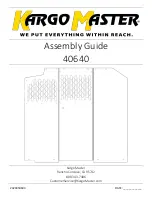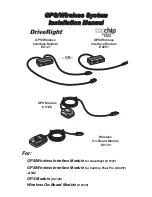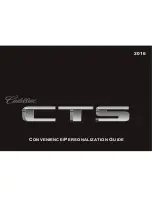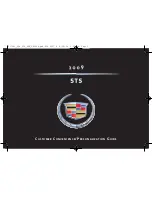
The frontal airbags (driver and right front passenger) are
not intended to inflate during vehicle rollovers, rear
impacts, or in many side impacts because inflation
would not likely help the occupants.
In any particular crash, no one can say whether an
airbag should have inflated simply because of the
damage to a vehicle or because of what the repair costs
were. Inflation is determined by the angle of the
impact and how quickly the vehicle slows down in frontal
or near-frontal impacts.
What Makes an Airbag Inflate?
In an impact of sufficient severity, the airbag sensing
system detects that the vehicle is in a crash. The
sensing system triggers a release of gas from the
inflator, which inflates the airbag. The inflator, airbag,
and related hardware are all part of the airbag modules
inside the steering wheel and in the instrument panel
in front of the right front passenger.
How Does an Airbag Restrain?
In moderate to severe frontal or near-frontal collisions,
even belted occupants can contact the steering wheel or
the instrument panel. Airbags supplement the protection
provided by safety belts. Airbags distribute the force
of the impact more evenly over the occupant’s upper
body, stopping the occupant more gradually. But airbags
would not help you in many types of collisions,
including rollovers, rear impacts and many side impacts,
primarily because an occupant’s motion is not toward
those airbags. Airbags should never be regarded
as anything more than a supplement to safety belts, and
then only in moderate to severe frontal or near-frontal
collisions.
What Will You See After an Airbag
Inflates?
After an airbag inflates, it quickly deflates, so quickly
that some people may not even realize the airbag
inflated. Some components of the airbag module — the
steering wheel hub for the driver’s airbag, or the
instrument panel for the right front passenger’s
bag — will be hot for a short time.
1-62
Summary of Contents for 2005 Safari
Page 5: ...These are some examples of symbols that may be found on the vehicle v...
Page 6: ...NOTES vi...
Page 113: ...NOTES 3 3...
Page 114: ...Instrument Panel Overview 3 4...
Page 164: ...NOTES 3 54...
Page 208: ...NOTES 4 44...
Page 220: ...Engine Compartment Overview When you open the hood you will see the following 5 12...
Page 343: ...Maintenance Record cont d Date Odometer Reading Serviced By Maintenance Record 6 33...
Page 344: ...Maintenance Record cont d Date Odometer Reading Serviced By Maintenance Record 6 34...
















































